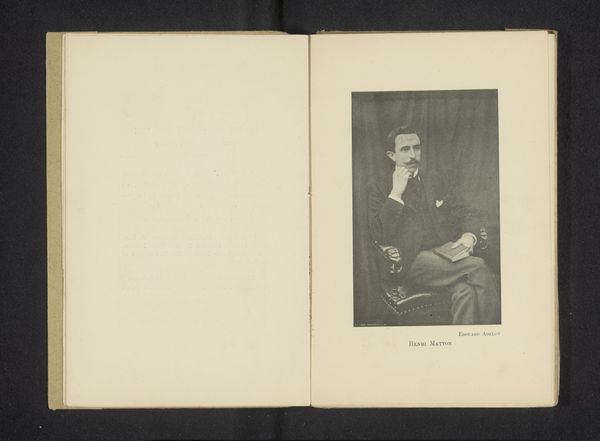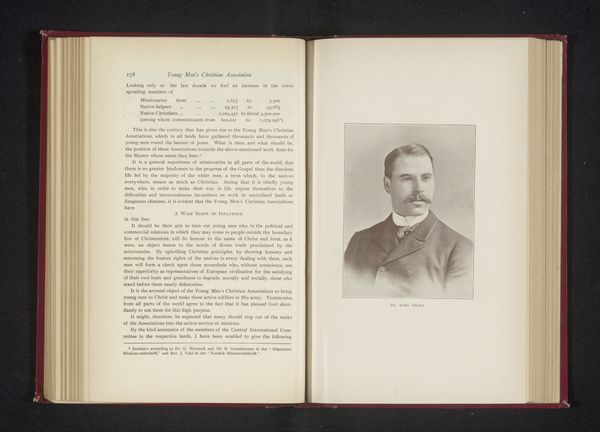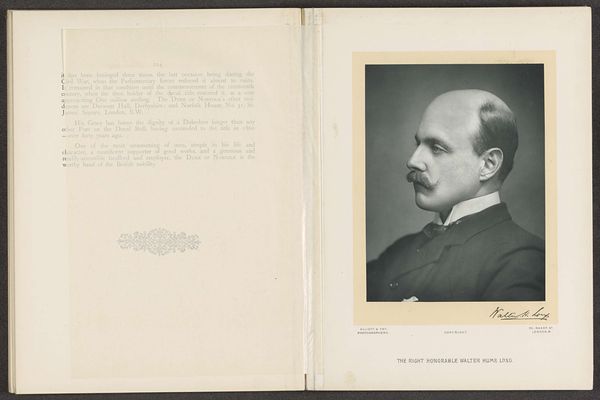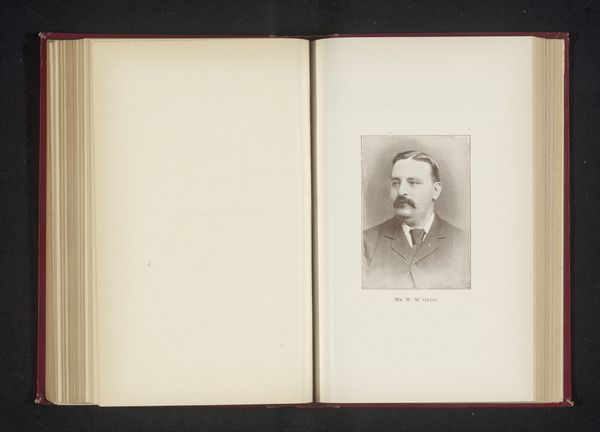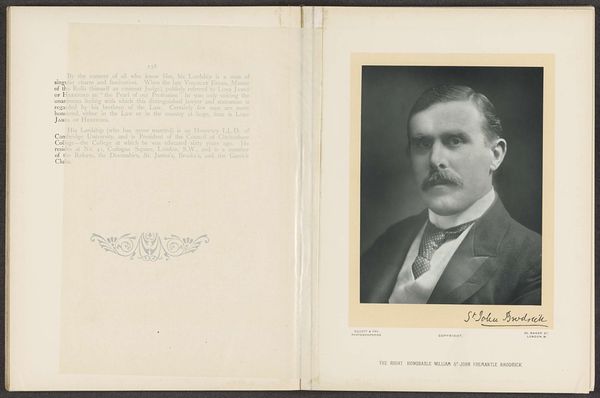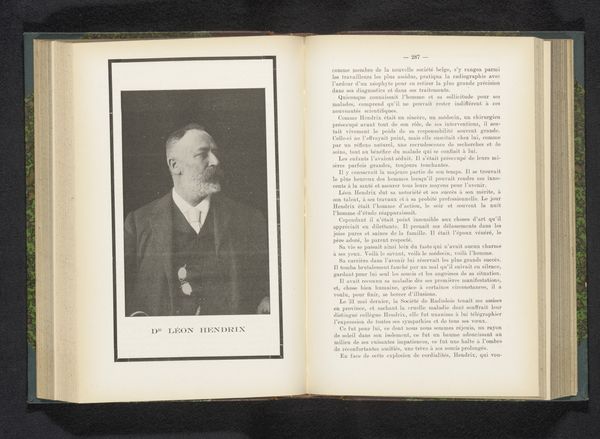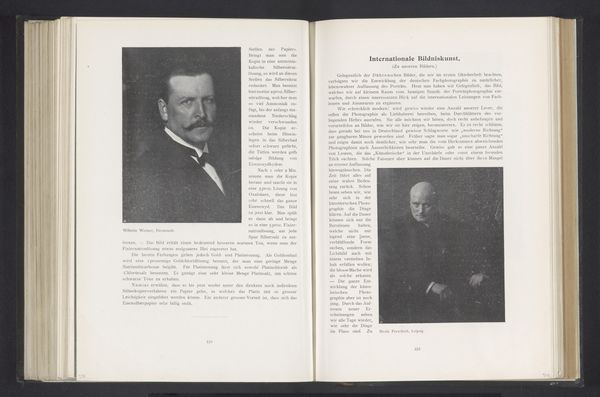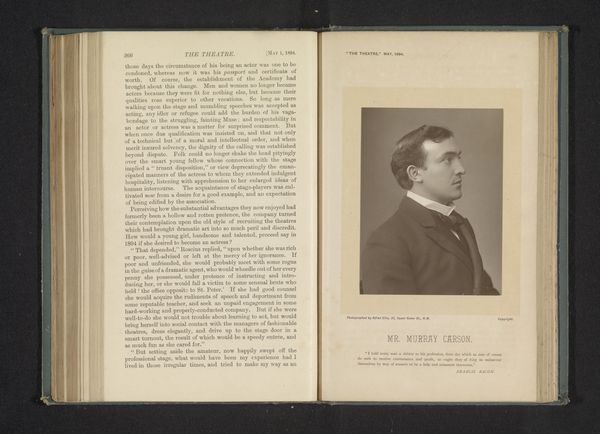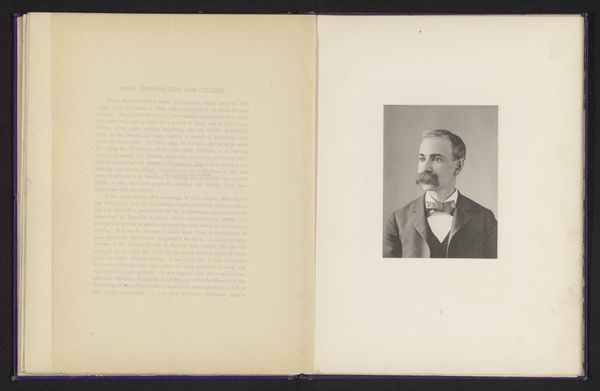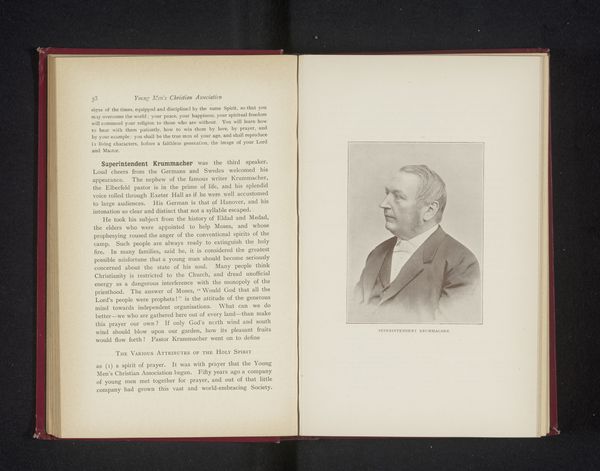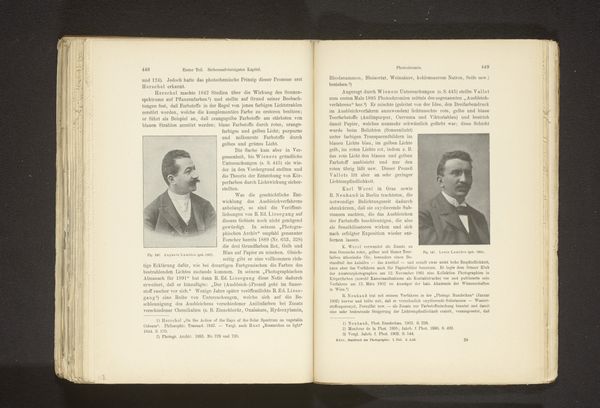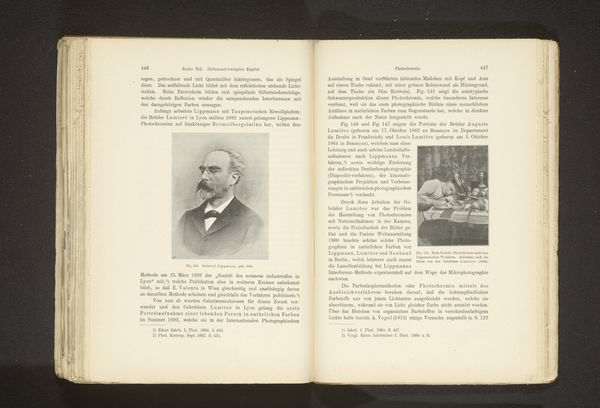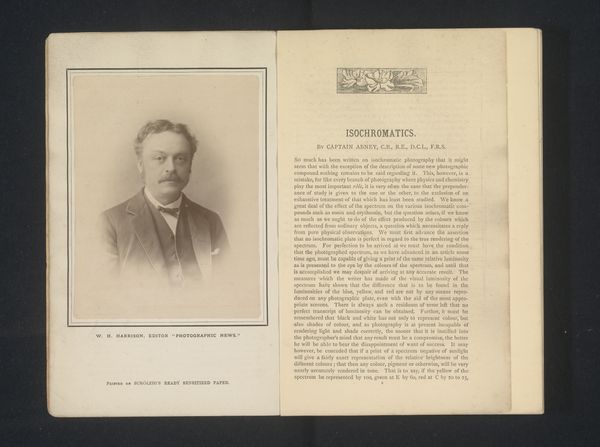
print, photography
#
portrait
#
aged paper
#
homemade paper
# print
#
photography
#
personal sketchbook
#
history-painting
#
letter paper
#
historical font
Dimensions: height 135 mm, width 91 mm
Copyright: Rijks Museum: Open Domain
Editor: Here we have a photographic print of Reverend Peter Mackenzie, circa 1874-1884, from an unknown photographer. What strikes me is the framing within the open book and the seemingly candid nature of the Reverend’s pose. How do you interpret this work, considering its context as a historical document and as a representation of Victorian society? Curator: What immediately captures my attention is how this portrait functions as a carefully constructed piece of historical narrative, especially within the broader frame of the book. The adjacent text highlights Mackenzie's perceived qualities, words such as ‘gentleman’, 'courtesy’ and 'chivalry', constructing an ideal of Victorian masculinity closely tied to religious and social status. This resonates with wider discussions around class, morality, and the performative aspects of identity during this period. What do you think about the intentionality behind staging this image? Editor: It seems like the photographer was trying to convey a certain image of the Reverend. Do you think this photograph is successful at depicting this ‘ideal Victorian gentleman,’ or does it reveal more complicated truths about identity and representation? Curator: The power dynamics inherent in portraiture of this era are worth exploring. How complicit was the subject in shaping his own image? It's essential to unpack how class and religious authority shaped individual identity in late 19th century Britain and whose perspectives dominate historical accounts. Considering what isn’t visible or mentioned— the untold stories of the working class or women, or marginalized communities— prompts questions about visibility, power and the construction of historical memory. Editor: That's fascinating. I never thought about it that way. I came into this viewing the image rather simply as a portrait of a clergyman. Curator: Examining portraits like this allows us to delve deeper into the intersections of history, identity and representation, opening discussions about inclusivity, visibility, and the narratives that shape our understanding of the past and present.
Comments
No comments
Be the first to comment and join the conversation on the ultimate creative platform.
